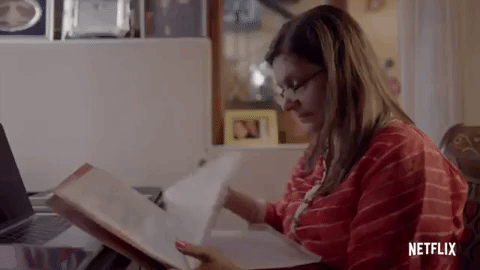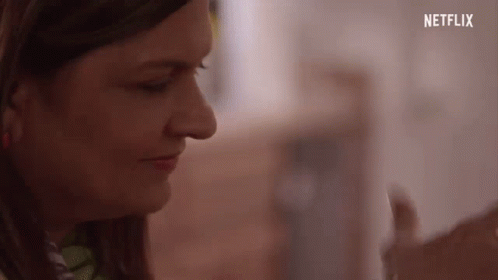The thrilling conclusion to “That time I used speed dating as inspiration for hiring”
TL;DR of the first half for those who went to refill their coffee between posts:
Brand new product team, ambitious deadlines, permission to hire talent, no time in my schedule, panic.
Luckily I had been watching a lot of Indian Matchmaker (Netflix, a true guilty pleasure) and was inspired to try hiring a different way.
Working with my flexible, wonderful, adaptable TA, we redesigned the process to look more like this:
Step 1: I review all resumes as they come in and flag the ones to screen.
Like Sima, first I had to scan the profiles of everyone in the database to find the opportunities for a match.
This was critical because I had a complex matrix of skills I was looking for on the team and was open to non-traditional career paths. It sounds time consuming, but it was worth it. Five minutes of scanning a resume gives each candidate a fair shake (no ATS filters to exclude them because they used the wrong word!), allowed me to identify different backgrounds and perspectives in candidates that pointed to transferable skills (diversity of thinking and perspectives!), and helped me get a sense for what skills were less frequent in our resume pool and needed to be more heavily recruited for.
There is a difference between a non-traditional career path and no experience in UX. I’m sure that 2x PhD Russian Data Scientist who applied to all of my open positions was a very impressive individual, but they had never designed a single digital experience. I was open to all kinds of experience - paid, volunteer, through education, through work, on your own, but you had to have at least seriously tried UX before to get through this round.
Step 2: My TA partner would phone screen each of those I flagged.
We agreed upon questions for him to ask, from salary range and if they were in a remote friendly state, to comfort with Figma & Jira, and their experience working in ambiguous spaces. Why did they apply for this role? None of these were deal-breakers, they just gave us a fuller picture of the candidate. Perhaps most importantly, the TA would get a portfolio link from each candidate.
Step 3: The team would review the portfolio.
Just as Sima brings potential matches to the families of her clients for review, I brought my potential matches to the team.
When we were smaller, we’d do this together in a group meeting. As the team grew I identified the 3-4 people who would work closest with the new hire to review their portfolio with me. We looked for individuals who were able to talk about their process, for diversity of perspective and background, for something that surprised or delighted us. Portfolios that interested us were scheduled for the round I affectionately referred to as the “speed dating round.”
Here’s the thing about portfolios. You can’t judge a book by it’s cover, nor can you judge a designer by their portfolio landing page. Be willing to dig deeper, to read the things the designer has carefully written, to look past that interesting choice they made to feature a 404 Error Page design as their home image….
UX Design is mostly about thinking, problem solving, and process. The visuals are just the last layer, and arguably the structure that those visuals sit on is far more important. We forced ourselves to look past flashy graphics or great web templates to get to the heart of their process and thinking, and I believe this focus truly helped us find the best of the best.
Step 4: Speed dating.
We committed to this being it - we’d interview the candidate for one hour and then either make an offer or move on. No third rounds, no fourth rounds, no challenges, no presentations. We focused on what was most important to us: was the candidate able to demonstrate mastery of one or more of the skills we needed? Did they offer a perspective we didn’t already have? Did they add to our culture? Did they ask good questions? Were they comfortable speaking their mind?
Honestly, our best candidates were those that challenged me intellectually or technically, I wasn’t looking to hire 10 more of me, I was trying to build a team of experts who were curious to discover more.
Quick aside:
Sima teaches us that in dating, a 60-70% match is worth pursuing. Don’t let perfect be the enemy of good!
The same is true in hiring - what are you willing to teach and train, and what are you not? Be open to finding a good candidate and working with them to get them to perfect!
Over the next 6 months I reviewed hundreds of resumes and held 54 speed dating interviews.
It wasn’t always easy or straightforward, but we stuck to filling skill gaps with candidates that met our original 4 qualities:
Did UX before. We were just as open to junior designers fresh out of bootcamp as we were seasoned UX veterans, but we were not interested in people who were “interested in trying UX” (Yes, I had at least three applicants say that!) without having actually gone out and tried it yet.
Not an asshole. Luckily, we didn’t have to deal with much on this front, but we kept an eye out for little things that might be red flags. For example, did the way they were speaking to me change once I told them my title? Did they treat junior members on the call differently than they did senior ones? Did they talk over people (not in that “I’m so excited!!!!!!” way, but in that “I know the answer and you don’t” way).
A curious mindset. We purposefully left half of each interview for their questions. Did they ask clarifying questions? Did they dig deeper? Did they wonder or brainstorm with us? Did they talk about times they learned and grew as a professional?
A cultural add. We started every interview with small talk. We joked, we asked about their weekend, we told them about that funny thing that just happened in a meeting - engaging them in conversation before even introducing ourselves. We asked about hobbies, had genuine interest in their lives outside of work, and we were looking for those who joined in and opened up.
We trusted our guts, we were open minded to new experiences and backgrounds, and every person we offered a position to took it. Our dream team came together to include:
An associate level designer with insane prototyping skills, her own jewelry business, and a bootcamp training.
Four mid-level designers, one with a background in film and a passion for diversifying voices in UX, one with a deep curiosity for and understanding of human interactions flows and an ability to make conversation with anyone about anything, one motion graphics designer with a background in photography and a passion for driving zambonis, and one designer with an exceptional understanding of usability and accessibility and passion for traveling and experiencing new cultures.
These amazing people were mentored by two senior designers - one with a background in higher ed and startups with an amazing ability to make sense of any problem before you even realize you have one, and one extremely talented visual and UX designer who pushed the team to stop and sketch and find joy in the little things.
All were led by two directors who balanced each other perfectly and only drove each other crazy sometimes - one with deep skills in concept development and creative problem solving, and the other with scary good organizational and operational skills and that valuable ability to get shit done.
Finally, partnering closely with me, a UX Architect with deep understanding of educational technology who could seamlessly step into the product management or development world, mentor all of us on the complexities of the system we were building, and be my partner (keep me in check!) on all things UX strategy and long term vision.
In the following two years we hired out our UX Writing team with three more crazy talented individuals:
A education and travel writer with an insanely positive can-do attitude and a small herd of cows at home, a compassionate and fun leader with a background in technical writing, and a rock-climbing badass architect who got more excited the more complex the problem became.
…and we committed to welcoming a talented sound and video producer into our team to help him dip his toes into the world of product design.
We eventually broke out the Ops function, stood up a communications function, and merged with the Learning Experience team, but those are stories for another day.
Through the next several years the team had no attrition, no issues with unhealthy conflict, and no product challenges we couldn’t overcome together. They recognized the expertise in each other, were curious to learn from each other, and were the best damn design team in the industry… the great experiment of speed interviewing worked, we all found our perfect matches, we had a well rounded and balanced team, and we created some truly impressive UX work.
Sima would have been proud!


